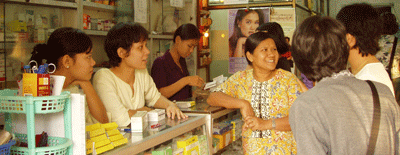Progress
Significant efforts on part of the PPM Subgroup as well as the growing realization of the need, feasibility and effectiveness of PPM based on evidence from successful initiatives has pushed PPM to the forefront of many national agendas for TB control. Many countries have scaled up PPM initiatives.
Demonstrating progress in terms of the contribution of non-NTP providers to total case notifications requires systematic recording of the source of referral and place of TB treatment locally, and reporting and analysis of aggregated data nationally. In 2013, 73 countries reported summary data to WHO, and data for 29 of these countries (including 14 HBCs) are shown here. In most of these countries, PPM initiatives contributed about 10% to 40% of total notifications.
Considering that the private medical sector in Africa is much smaller compared with that in Asia, the contribution of private-for-profit and not-for-profit providers in Ethiopia, Kenya, Nigeria and the United Republic of Tanzania is noteworthy. Progress in parts of Asia is also noticeable - almost every fourth case in Indonesia and the Philippines was notified by non-NTP care providers in 2012. Large public sector hospitals have contributed sizeable proportions of cases in China and Indonesia as well as in the Philippines, and engagement of large hospitals is one of the major strategies required to improve detection and notification of TB cases.
Approaches to engage non-NTP care providers vary according to the local context, but there are some important cross-cutting elements. One is provision of standardized care by non-NTP providers according to national guidelines, in return for provision of free anti-TB drugs, supervision and quality assurance, and financial or non-financial incentives by NTPs. A second is the use of the International Standards for Tuberculosis Care, which facilitates the use of best practices in TB diagnosis and treatment among all care providers, especially those in the private sector. In the European Region and the Region of the Americas, con-tributions to case notifications from public sector providers outside the purview of the Ministry of Health, such as social security organizations and prison health services, are relatively large.

|






